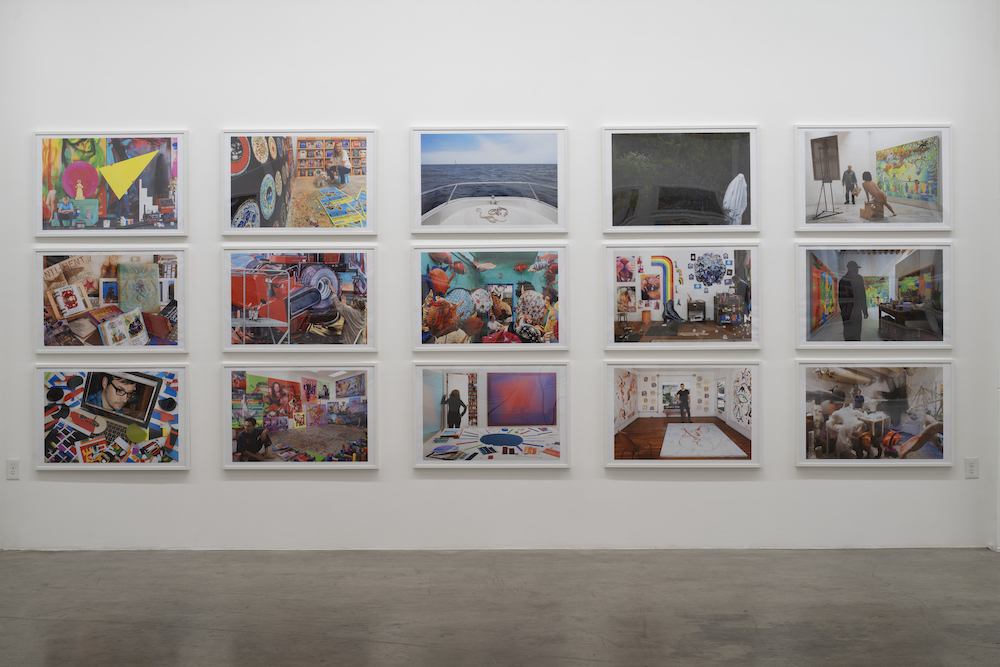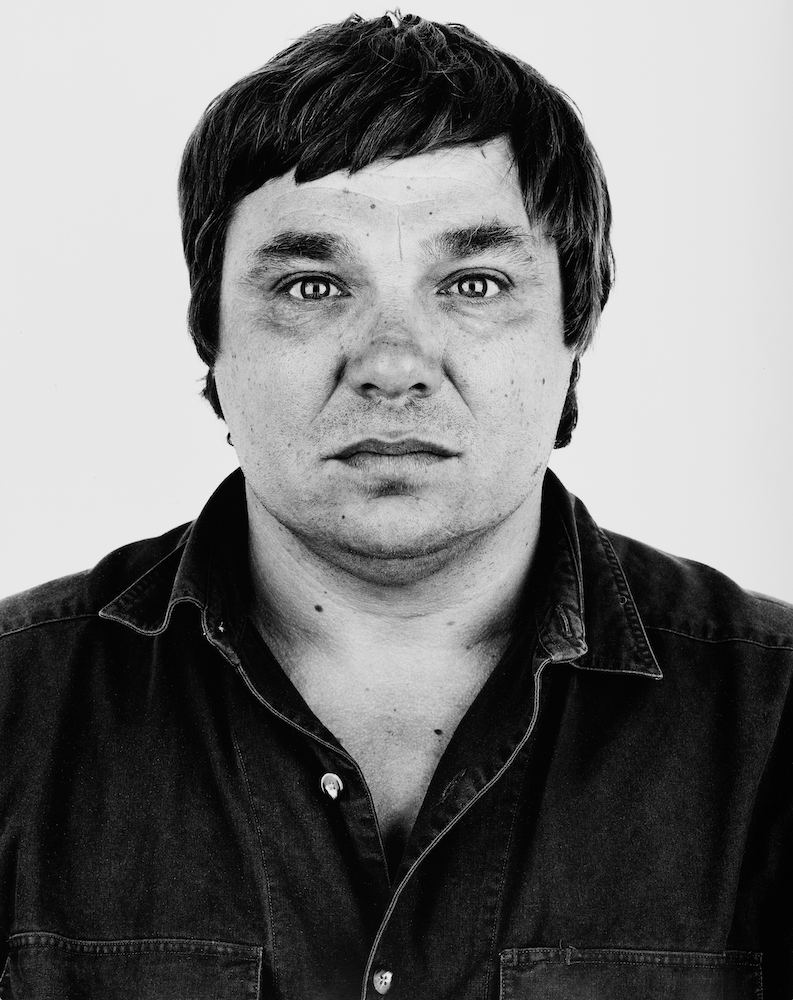Grant Mudford is a photographer with an extensive publication and exhibition history. Born in Sydney, Australia, in 1944, he studied architecture at the University of New South Wales (Sydney) and moved to Los Angeles in 1977. Since the 1980s he has functioned as a commercial photographer and became well known for his architectural and editorial work, along with his portrait photography. Last summer a show at PRJCTLA titled “Grant Mudford: Rosamund Felsen, A Photographic Essay” presented 80 of his portraits of artists associated with her gallery. Filling the walls were large-scale black-and-white photographs of noted LA artists from the 1980s such as Chris Burden, Mike Kelley and Paul McCarthy, as well as smaller color images (that originated as gallery announcements) installed in large grids spanning two opposite walls. Many of these photographs were shot on location at the artist’s studio and here Mudford’s insight shines through as he deftly juxtaposes the artists, their work and the specificity of the location. Included is Jacci Den Hartog standing in a corner, surrounded by sculptures that cut across the composition with her shirt matching the color in the artwork. There are multiple pictures of Patrick Nickell, who appears to be lost in the creation of his work. Numerous images of artists depicted from behind, including Karen Liebowitz seated on a scaffolding that fuses with the imagery in her painting.
I asked Grant to speak a bit about his portraits.

Grant Mudford, “Rosamund Felsen: A Photographic Essay” installation view, 2022. Courtesy of PRJCTLA.
ARTILLERY: Do you see your portraits of artists as collaborations?
Mudford: Some portrait sessions are more collaborations than others. A lot depends on how much the subject is aware of both the possibilities and the limitations of photography. Surprisingly few, including photographers, really understand this. Reality and photography are two totally different worlds. Hopefully the subject will trust me to make an image of them that they are comfortable with. Mutual trust is important. Since I am always confident in putting a composition together, I listen but I rarely need input from the subject.
How do you differentiate between the work you do for yourself and the work that is for hire or commissioned. Do you approach the session differently knowing what the outcome will be, whether it’s a book, magazine, announcement card or fine art?
I am always aware why am I making a photograph. If I’m making a photo for myself, it’s the most interesting way of working. I start from scratch and the possibilities are endless. If someone is paying me to make a photo, there are certain client expectations that I will consider. However, I can always manage to make a photo that, to me, qualifies as a work of art.
Many of your photographs are shot through windows or even the computer screen, creating frames within frames. I know we have spoken about composition and how important framing is. Can you talk a little about that?
The frame is critical to my work. Before making a photo, I carefully scrutinize all the edges and corners of the boundaries of the composition. I consider the position of everything contained within the frame and pay attention to what is cut by the frame and is suggested beyond the boundaries of the frame.
To me, what exists within the frame of the photo is more important than the subject itself. It’s always interesting to discover a frame such as a window, often a doorway, mirror or even computer screens that I can incorporate into the final composition, offering a glimpse outside the primary composition.

Grant Mudford, “Rosamund Felsen: A Photographic Essay” installation view, 2022. Courtesy of PRJCTLA.
Can you talk about the images you created as exhibition announcements for Rosamund Felsen Gallery as well as why the artists are sometimes depicted from the back?
One of the things that I tried to do with the Rosamund Felsen Gallery exhibition announcements was to offer an image that shows an integration and a relationship between the artist and the art itself, often achieved by positioning the artist within a dense collection of work in progress in their studio. I often position the artist with their back toward the camera so that the art receives at least as much attention as the artist.
Have you ever had a situation with an artist who was unresponsive, and you just could not “get” the picture. Do you re-shoot or visit an artist you just met more than once?
During a portrait photo session, an artist may seem unresponsive to participating in the process. I found that much of this resistance is based on fear. To minimize the artist’s exposure to the ordeal, I will bring in the artist only after I have totally prepped the composition for the camera. I have never found it necessary to re-shoot any of my portraits.



















0 Comments